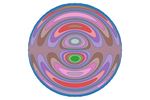Biography
Oleg Soloviev is a Senior Research Fellow at DCSC/3mE, TU Delft and a Senior Associate at Flexible Optical BV. His research interests include adaptive optics, wavefront sensing, phase retrieval, imaging through turbulence, and computational imaging. He leads the Smart Imaging Lab of DCSC and enjoys participating in the Carlas Smith’s Quantitative Nanoscopy Lab, which develops new methods for smart microscopy.
He obtained his PhD degree from TU Delft in 2006, with the thesis ‘Methods and sensors for accurate wavefront measurements’.
Interests
- Wavefront sensors and reconstruction
- Phase Retrieval
- Imaging through turbulence
- Computational imaging
Education
PhD thesis 'Methods and sensors for accurate wavefront measurements', 2006
TU Delft, the Netherlands
MSc (cum laude) in Mathematics, Applied Mathematics, 1994
(Lomonosov) Moscow State University, Russia

